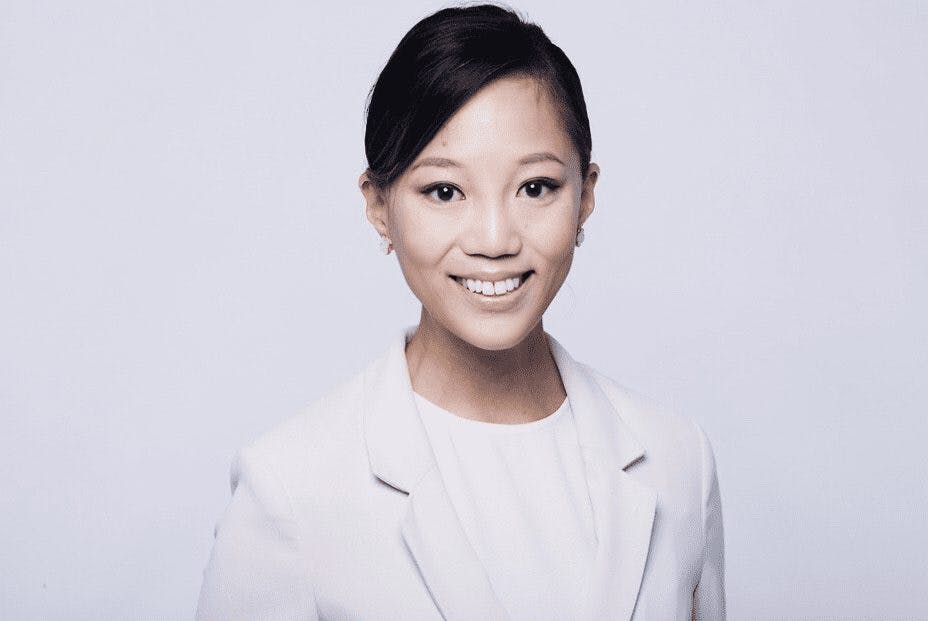Gone Crypto: Why I left Morgan Stanley for Digital Assets
In 2017, Anchorage’s Tricia Lin made the decision to leave Morgan Stanley to join the digital asset industry.

Tricia Lin, Anchorage; Source: Anchorage
- At Morgan Stanley, Tricia Lin’s clients first introduced her to digital assets around 2015
- Once in digital assets, she said she “philosophically fell in love with the idea of financial inclusion”
An investor at heart, Anchorage sales lead Tricia Lin knows strong metrics when she sees them.
“I have always been a growth investor, and growth investors look for momentum, year over year, quarter over quarter and week over week,” said Lin. “Crypto was just blowing those targets out of the water.”
Lin began her career in financial services sales before becoming an analyst herself.
“I helped traditional asset managers, either in equities, fixed income or other asset classes, with making sure they have the right data tools and information to make their investment decisions,” Lin said. “That was the first part of my career, then I made a transfer directly to Wall Street, onto the buy side.”
After spending eight years working at various venture capital and hedge funds, Lin found herself at Morgan Stanley doing business development for private wealth management.
It was her clients that first introduced her to digital assets around 2015. Once she started to learn more, Lin said, she could no longer ignore the asset class.
“Many of my newer clients were in the blockchain and crypto space,” Lin said. “It was the fastest growing asset class at the time, and it was so vastly misunderstood.”
Lin began to delve deeper into blockchain technology and digital assets, but she had a lot to learn about the emerging field. Even with her initial limited understanding, she saw the potential in crypto.
“It was a new asset class, a lot of my peers didn’t yet understand what bitcoin was, and I had barely just scratched the surface of understanding the technology,” Lin said. “I dug my heels in and did my best to learn everything I could about the technology and the crypto assets that sit above the technology.”
In 2017, Lin made the decision to leave Morgan Stanley to join Shuttle Ventures, a digital asset venture capital firm.
A no-brainer transition
“I philosophically fell in love with the idea of financial inclusion,” Lin said. “Combining that with this incredible opportunity for growth and outsized returns as an alternative investment made the transition from traditional finance to crypto a no-brainer.”
Her peers at Morgan Stanley were concerned about crypto’s volatile nature, but Lin was unphased.
“I think the fallacy was that joining this emerging new asset class would be more volatile and more unstable than working in traditional finance, but my view is actually the opposite,” Lin said. “I philosophically understood the long term opportunity and that this technology was not going anywhere. Yes, it would have periods of intense volatility, but would still, over the long term, continue to grow. That thesis has proven correct to date so far.”
Same differences
Lin moved to Anchorage in 2019. She began leading the sales team this year, and one of the biggest things she has realized is that traditional finance and crypto are not really all that different.
“On the buy side, working as an analyst and in capital and marketing and capital raising for hedge funds and venture capital funds, you focus on growth, and you look for outsized returns, or irregularities in the market that can be capitalized on, and crypto is no different,” said Lin.
“We have seen tremendous growth, first with bitcoin, and now with a prolific amount of other great teams and other crypto assets. There are a lot of parallels that can be gleaned that are not so different between traditional asset classes, like equities and fixed income, versus crypto assets.”
Have your own traditional-finance-gone-crypto story to tell? Email us [email protected]






